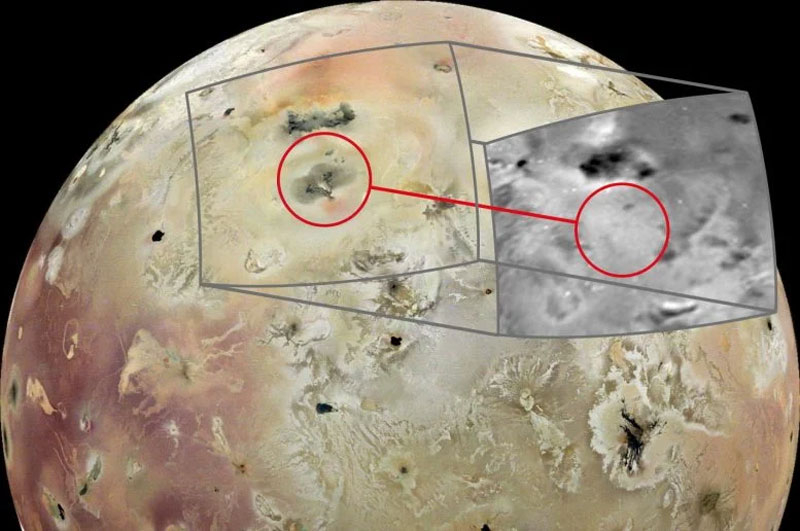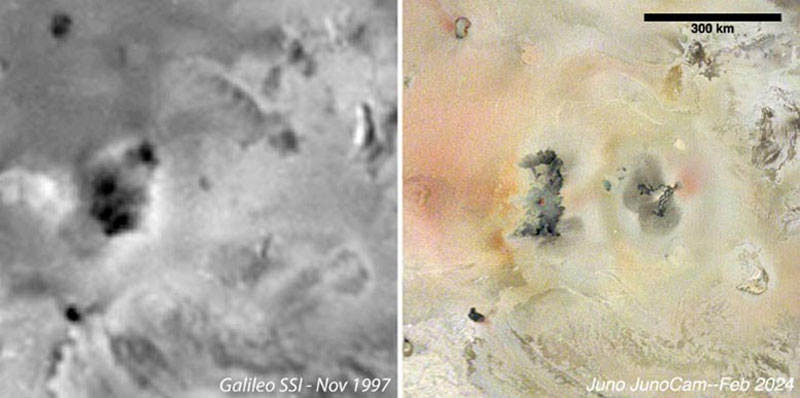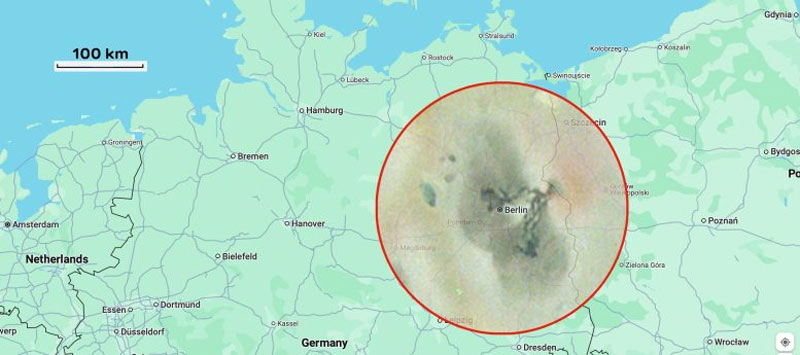The solar system’s most geologically active celestial body, Jupiter’s moon Io, strewn with hundreds of active volcanoes, continues to reveal its secrets under the supervision of NASA’s Juno probe. “Juno” has long ago completed its main scientific program and is now using the remaining equipment resources to fly around Jupiter, getting as close as possible to some of its satellites, without ceasing to delight scientists and citizens with unique images.

Image source: NASA
In the fall of 2023 and winter of 2024, Juno made close flybys of Io. Thus, in February 2024, the probe flew over the satellite at an altitude of 2530 km, which made it possible to take color images of Io’s surface with a resolution of 1.7 km/pixel. At the same time, the surface was illuminated by the light of the Sun reflected from Jupiter, which did not prevent us from obtaining color images of good quality. In one of them, scientists discovered an impressively sized volcano, which had not yet been seen in the photographs of the Galileo probe taken in 1997.
It turns out that a giant structure appeared on the surface of Io over the past 25 years or so. It includes the volcano itself and lava spills surrounded by red sulfur that fell back to the surface after the eruptions. The entire new massif is located on an area with sides of approximately 180 km. This is, in principle, the largest geological structure that has appeared on Io over the past quarter century.

In 2024, something new was discovered out of the blue
«Our recent JunoCam images show many changes on Io, including this large, complex volcanic object that appears to have formed out of nothing since 1997,” explained Michael Ravine, director of advanced projects at Malin Space Science Systems, which designed and operates the JunoCam instrument for NASA’s Juno project.
The eastern side of the volcano is colored a diffuse red color due to sulfur that was ejected into space by the volcano and settled back on Io’s surface. On the western side, two dark lava flows erupted, each about a hundred kilometers long. At the furthest point of the flows where lava accumulated, high temperatures caused frozen material on the surface to evaporate, resulting in two overlapping gray circular deposits.

Comparison of the new formation on Io with Berlin and the surrounding area
All old and new images of Juno are available on the mission’s website. NASA makes no secret of the information it receives, which can be accessed by anyone.